Winter driving tips – how to drive in snow, ice, rain and fog
Winter is hitting hard and the UK remains seemingly as unprepared as every January. Stay safe and mobile with these driving tips
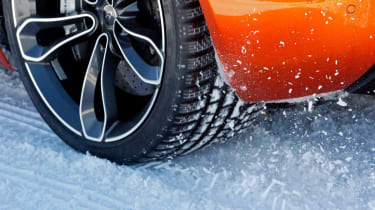
Whether you check your tyre pressures daily or never give the state of your car a second thought until the MOT is due, winter presents a whole new set of challenges for both your car and your driving skills. Driving conditions can change dramatically from one minute to the next without warning, and even if you are ready for anything, the same cannot be said for everyone else you have to share road space with.
Preparing your car for anything that the winter months can throw at it can make the difference between getting home in one piece, an expensive repair bill or not making it home at all. Similarly, a little time spent on considering the conditions, how they will affect the behaviour of your car and adjusting your driving style to suit will not only take some of the stress out of the situation, but potentially allow you to enjoy the additional challenge - you can learn a lot about how your car drives when grip levels are low.
The fundamentals of driving in wintery weather are the same regardless of the conditions, with the primary consideration being whether the journey is absolutely necessary. Only you can decide if that is the case, and you may well decide that no journey is unnecessary, but it is important to consider the likelihood that your own mistakes or those of others may cause you to get stuck, or worse. Think about the worst-case scenario and whether that would result in a short walk home or being stranded far from civilisation.
Below we’ve complied some basic driving tips for the key hazardous wintery weather conditions that you’re likely to encounter on UK roads. You’ll find details of sensible precautions, simple driving techniques and car preparation…
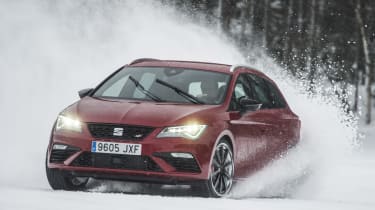
Driving in rain
Your calendar could be displaying any month of the year for you to be greeted by heavy downpours, but rain in the winter frequently sticks around for longer and has a more detrimental effect on the state of the roads.
As with any kind of road driving you should adjust your speed so that you can stop in the distance you can see to be clear; stopping distances are generally doubled in wet weather, and spray reduces visibility. You will have less grip to work with, so although any loss of grip will happen at lower speeds the amount of grip can vary through a corner.
Avoid standing water, even if it means slowing down to move out of your lane. Not only could it cause aquaplaning but in winter a puddle could easily be hiding a nasty pothole. No matter how tempting it might be, never drive into flood water unless you’re completely certain of its depth and your car’s ability to cross safely.
Preparing your car for rain is about maximising grip and visibility. Ensure all your windows and mirrors are clean, give your wipers a wipe down too, or consider replacing them if they are ageing, and used dipped headlights - but no fog lights.
Tyres should be set to the recommended standard pressure but tread is more important. If your tyres are showing 3mm or less give serious consideration to early replacement, as stopping distances can increase by 50% again with tread at the legal 1.6mm limit.
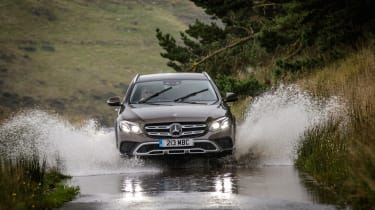
Driving in fog
The weather event that British drivers seemingly have the most trouble understanding, fog should present no particular problems as long as your speed is appropriate to visibility. The thickness of fog can vary within metres and seemingly without reason, so expect the unexpected and never assume that you can see everything there is to see.
Be prepared for other drivers to struggle with the conditions and make poor or unexpected decisions to brake, pull out or change lanes. As much as lower speeds may be a frustration, be wary of letting frustration get the better of you.
Getting your car ready for fog is similar to preparing for rain in that visibility is key. Ensure all windows and mirrors are clean, screenwash is topped up and that all your lights are clean and working properly too. Rear fog lights are a must - but only when the conditions suit them. The Highway Code stipulates you should not use fog lights unless visibility is 100 metres or less; failing to switch them off causes more of a hindrance than helping other drivers.
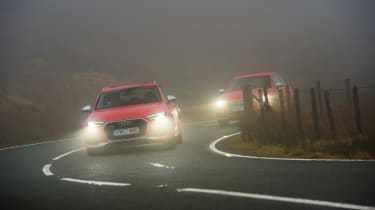
Driving in snow
Preparing your car for snow is more important than any other road condition as the potential disruption is massive. Plan your journey with care and have at least one back-up route planned in case of closures. Check your car from nose to tail; clean windows, full screenwash - use a stronger solution for low temperatures - clean mirrors and lights too.
Keep your tyre pressures standard; dropping them by 20% might give you a little more grip in fresh snow but will be severely compromised on asphalt. Pack a survival kit to take with you, including a shovel, torch, blanket, appropriate footwear, water and a hot drink if you have a flask. Fill your fuel tank or at least put in double the amount you need for the journey; if you are stranded overnight it is infinitely preferable to be able to keep the engine running.
Driving in snow demands anticipation and delicacy, although occasionally you may need to apply large doses of throttle to avoid getting stuck. Give yourself at least double the distance to the car in front and read the road ahead; look at the surface and the behaviour of other cars for clues on where the slipperiest parts are. Use a higher gear than normal to cut wheelspin but use lower gears downhill so you can stay off the brake. Sudden inputs of steering, brakes or throttle are more likely to break grip, so gradual application is key.
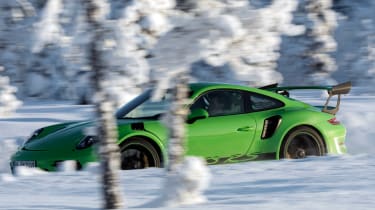
Driving in icy conditions
Even more than snow, icy conditions can mean little or zero grip if you are running on standard all-season tyres, so consider your options before venturing out. Major roads receive more council grit than minor ones so plan your route accordingly; the later in the day you travel the less ice there is likely to be. As well as ensuring your windows and mirrors are clean and your screenwash is topped up, check your spare tyre and associated tools are all in place; if the worst should happen and you go even slightly off the road, a kerb can cause an instant puncture.
When driving on ice you should treat the road as guilty until proven innocent. Assume there is ice - even if you can’t see it - until the feedback from the steering or throttle tells you otherwise. Read the road ahead and look for clues, such as the behaviour of other cars and sections of road that are in shade - areas without sun exposure can stay icy long after ambient temperatures are above zero.
If you hit an unexpected patch of ice and lose grip, try not to panic and hit the brakes. Remove the input that caused the skid until grip is regained, even if you can only reduce your speed slightly it is better than slithering off the road with no control.


